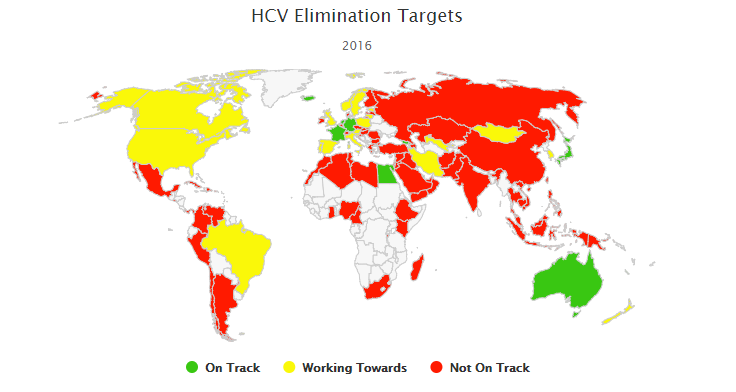According to a new report, nine countries are getting hepatitis C under control so successfully it will no longer be an issue by 2030.
More than 300 million people around the world live with a chronic hep B or C infection, so this is pretty amazing news. On top of that, global efforts are accelerating to make treatments readily available for everyone.
This latest data on hepatitis C elimination comes from the Polaris Observatory, an independent entity dedicated to supporting the goal of global elimination of both hep C and B by 2030.
It sounds like a lofty goal, but in recent years humans have actually made considerable progress towards eliminating the life-threatening disease.
Hepatitis, which primarily attacks the liver, is caused by one of five blood-borne viruses (labelled A, B, C, D, and E). We have widely-available vaccines against A and B, but not the rest of them, and 75-85 percent of people who get hep C end up living with a chronic infection.
But now, thanks to the latest advances in antiviral medication, it's actually now possible to completely cure more than 95 percent of hepatitis C cases. Unfortunately, the problem lies with access to diagnosis and the prohibitively high cost of the drugs.
Because we do actually have tools to keep hepatitis in check, several international organisations have been ramping up their efforts to make viral hepatitis one of our global public health priorities.
In 2016, the World Health Organisation (WHO) adopted viral hepatitis elimination targets, aiming for a 90 percent reduction in new infections, and 65 percent reduction in mortality within the next 14 years.
Now it looks like the efforts are slowly starting to pay off, as nine countries - Australia, Brazil, Egypt, Georgia, Germany, Iceland, Japan, the Netherlands and Qatar - have been declared to be on course to completely eliminate hepatitis C by 2030.
Interestingly, these countries have pursued different routes to head toward the targets.
For example, Egypt has implemented mass screening for the viral disease, and mass production of more affordable hep C drugs.
Meanwhile in Australia, the government reached an agreement with pharmaceutical companies to provide government-funded treatment to all adult hep C patients - this initiative has already ensured that 30,000 hep C patients were cured in 2016 alone.
"What we are seeing is that some countries, especially those with a high burden, are making the elimination of viral hepatitis a priority and are looking at innovative ways to do it," says Home Razavi, director of the US Center for Disease Analysis.
While these efforts are truly an inspiration, of course it means the vast majority of the world's countries still need to ramp up their game if they're going to contribute to meeting the WHO hepatitis elimination targets - and it's clear we still have a long way to go.
"It will be near-impossible for most other countries to meet the WHO targets without a huge scale-up in political will and access to diagnostics and treatment," says Razavi.
According to data from Polaris Observatory, a further 22 countries are certainly working towards these targets, while the rest still need a serious change of policy and increased funding before we can expect to see an improvement.
Still, it's a brilliant start to a long-term plan that will ultimately improve and save millions of lives.
"We cannot lose sight of the fact that last year 194 governments committed to eliminating viral hepatitis by 2030," says Charles Gore, president of the nonprofit World Hepatitis Alliance.
"For sure we are still a long way from this goal, but that doesn't mean it's some unattainable dream."
The news was announced at the 2017 World Hepatitis Summit currently taking place in São Paulo, Brazil.

